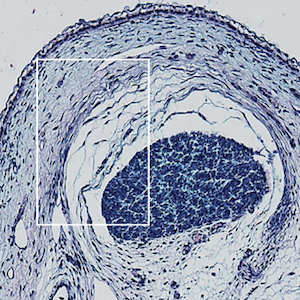The diagnostic utility of miRNA21 in systemic sclerosis

All claims expressed in this article are solely those of the authors and do not necessarily represent those of their affiliated organizations, or those of the publisher, the editors and the reviewers. Any product that may be evaluated in this article or claim that may be made by its manufacturer is not guaranteed or endorsed by the publisher.
Authors
Objective. Systemic sclerosis (SSc) is a multisystem autoimmune disease of heterogeneous pathogenesis, including vascular, immunologic, genetic, epigenetic, and environmental factors. Progressive fibrosis is the hallmark of SSc. Intense research has been conducted to unveil new tools for early diagnosis and management, thus reducing morbidity and mortality. miR-21 has recently been considered to play an important role in the fibrosis of SSc. The objective of this study was to evaluate miR-21 levels in SSc patients and study its correlation to the extent of skin fibrosis and association with various clinical characteristics.
Methods. A total of 25 patients with SSc who fulfilled the American College of Rheumatology/European Alliance of Associations for Rheumatology 2013 classification criteria, as well as 25 controls, were enrolled in a cross-sectional study. The extent of skin fibrosis was evaluated using the modified Rodnan skin score, and disease severity was assessed using the Medsger severity score. The levels of miR-21 were measured by quantitative real-time polymerase chain reaction. The 2-ΔΔCt method was used for analysis. SSc patients affected by diabetes mellitus, hypertension, renal impairment, heart disease, malignancy, other autoimmune diseases, or a history of serious acute infection within 6 weeks were excluded.
Results. There was a high statistically significant difference in miR-21 levels between cases and controls (p<0.001). At a cut-off level of 2.55, miR21 could discriminate between SSc patients and controls with sensitivity 92% and specificity 100%. There was no significant correlation between miR-21 levels and the degree of skin fibrosis. There was a significant positive association between miR-21 levels and the presence of arthritis in SSc patients (p=0.007).
Conclusions. miR-21 was suggested as a robust diagnostic biomarker in SSc with superiority over the traditionally utilized antibodies. Additionally, due to its association with arthritis, it is supposed to play a proinflammatory role in addition to its pronounced profibrotic effects. Interestingly, the profibrotic miR-21 may not reflect the extent of skin fibrosis.
Ethics Approval
This work was accepted by the local ethical committee of the Department of Internal Medicine, School of Medicine, Cairo University. All procedures carried out in this study involving human subjects were in line with the institutional and/or national research committee's ethical standards and with the Helsinki Declaration of 1964 and its subsequent amendments or equivalent ethical standards.How to Cite

This work is licensed under a Creative Commons Attribution-NonCommercial 4.0 International License.










